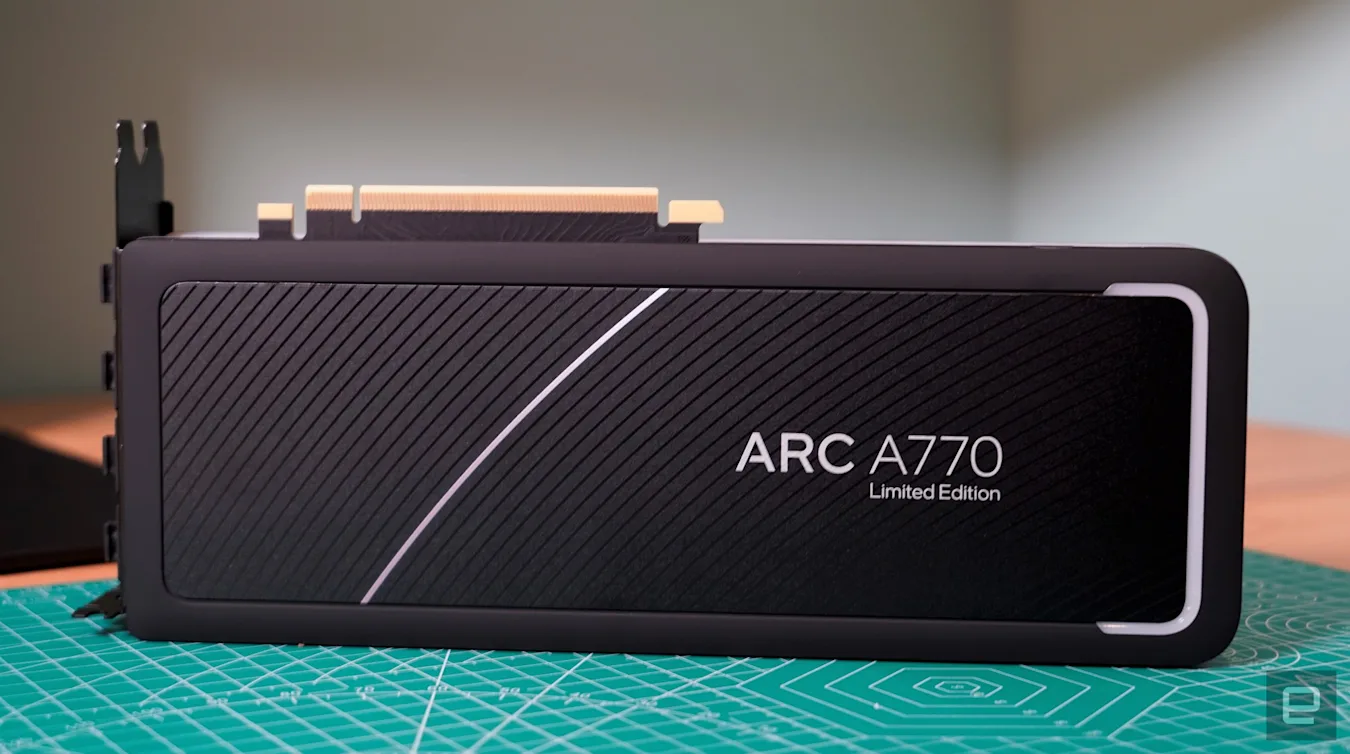Intel Arc A750 and A770 review: Trouncing NVIDIA and AMD on mid-range GPU value
Image Credit: Devindra Hardawar/Engadget
The Arc A770 was within reach of the RTX 3070 Ti's Time Spy Extreme score, a card that launched at $599 (and sold for much more) last year. It also proved to be a decent ray tracing contender (within reason), reaching 76 fps in Cyberpunk 2077‘s benchmark while playing in 1080p with the “ultra” ray tracing profile. Both GPUs scored close to the RTX 3060 Ti in 3DMark's Port Royal ray tracing benchmark, almost twice as fast as the Radeon 6600. Given how disappointing AMD's ray tracing performance has been, I was genuinely shocked that Intel was able to deliver a significantly better experience.
Still, it's strange to see the A750 and A770 scoring closely in some cases. The pricier card also hit around 75 fps while playing Halo Infinite in 1440p, and they were both within a few thousand points of each other in the Luxmark HDR OpenCL benchmark. That's both a testament to Intel's graphics architecture, and a sign that its drivers may need some work. (Another sign: Control didn't think either card was compatible with DirectX 12 ray tracing.)
NVIDIA's RTX 3060 Ti held a slight lead on both of Intel's cards in Hitman 3, though I was able to get a decent performance boost of 30 fps when I enabled Intel's XeSS technology. Similar to DLSS on RTX GPUs, it uses AI processing to upscale images rendered at lower resolutions. I didn't notice any artifacts during the Hitman benchmark, though I didn't have a chance to spend a ton of time playing it with XeSS enabled.
You'll find XeSS support on titles like Call of Duty: Modern Warfare II, Naraka Bladepoint and Shadow of the Tomb Raider when the Arc GPUs launch. Similar to AMD's FX Super Resolution (and unlike DLSS), Intel's upscaling tech can also work with competitor's GPUs to give everyone a framerate boost.

Devindra Hardawar/Engadget
While the Arc A750 and A770 are best suited to 1440p and 1080p gaming, they also handled my ultrawide monitor's 3,440 by 1,440 resolution decently. In Halo Infinite, I saw an average of 62 fps on the cheaper card with maxed graphics settings, while the A770 hit a smoother 70 fps. These aren't groundbreaking scores, but it was heartening to see affordable cards holding their own at higher resolutions.
Despite a few hiccups, like not getting ray tracing in Control and occasional framerate hiccups in Cyberpunk, I was happy to see that Intel's Arc drivers didn't have any major issues. There were no game crashes or blue screens of death during my testing. Still, Intel needs to show it can optimize its drivers in time for major game launches (guaranteeing XeSS support in Modern Warfare II is a start). And given the company's complete abandonment of its previous discrete graphics card, Intel also has to prove that it won't just give up on these GPUs soon. Most gamers will need to rely on their video cards for several years, after all.
So sure, I have hesitations about recommending these cards wholeheartedly. But if you're looking for solid deals, especially following years of ever-increasing GPU prices, the Arc A750 and A770 are tough to beat. After almost a decade of doubting Intel's graphics hardware, I can't help but feel like the gruff farmer in Babe: That'll do Intel, that'll do.
All products recommended by Engadget are selected by our editorial team, independent of our parent company. Some of our stories include affiliate links. If you buy something through one of these links, we may earn an affiliate commission. All prices are correct at the time of publishing.

